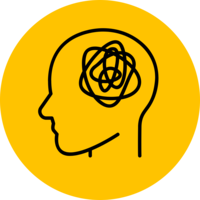National Survey of Child and Adolescent Well-Being I (NSCAW I)
The NSCAW I was a study of children who had contact with the child welfare system. Participants included over 6,200 children, aged birth to 14 years at the time of recruitment, who had contact with the child welfare system within a 15-month period, which began in 1999. These children included two groups: 5,504 interviewed from those entering the system during the reference period (October 1999 - December 2000), and 727 from among children who had been in out-of-home placement for about 12 months at the time of sampling. Participants were selected from 97 counties across the United States of America. Participants were followed up 1 year, 18 months, 3 years, and 6-7 years after the close of the investigation.
Study design
Cohort
Number of participants at first data collection
6,231 (participants)
Age at first data collection
Birth - 14 years (participants)
Participant year of birth
Varied (participants)
Participant sex
All
Representative sample at baseline?
The population of the United States of America.
Sample features
Country
Year of first data collection
1999
Primary Institutions
Caliber Associates
Research Triangle Institute
University of California, Berkeley (UC Berkeley)
University of North Carolina at Chapel Hill (UNC)
Links
acf.gov/opre/project/national-survey-child-and-adolescent-well-being-nscaw-1997-2014-and-2015-2024
Profile paper DOI
Not available
Funders
Administration for Children and Families (ACF)
U.S. Department of Health and Human Services (DHHS)
Ongoing?
No
Data types collected


- Computer, paper or task testing (e.g. cognitive testing, theory of mind doll task, attention computer tasks)
- Interview – face-to-face
- Interview – phone
- Physical or biological assessment (e.g. blood, saliva, gait, grip strength, anthropometry)
- Secondary data
- None
- None
- Social care data
Engagement
Keywords



